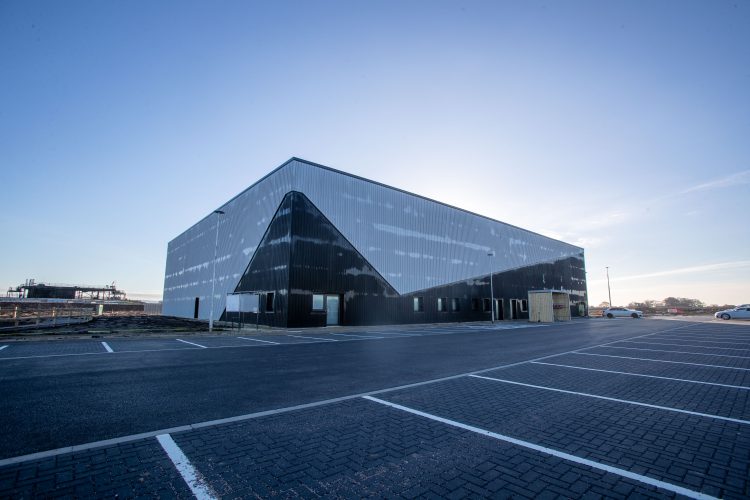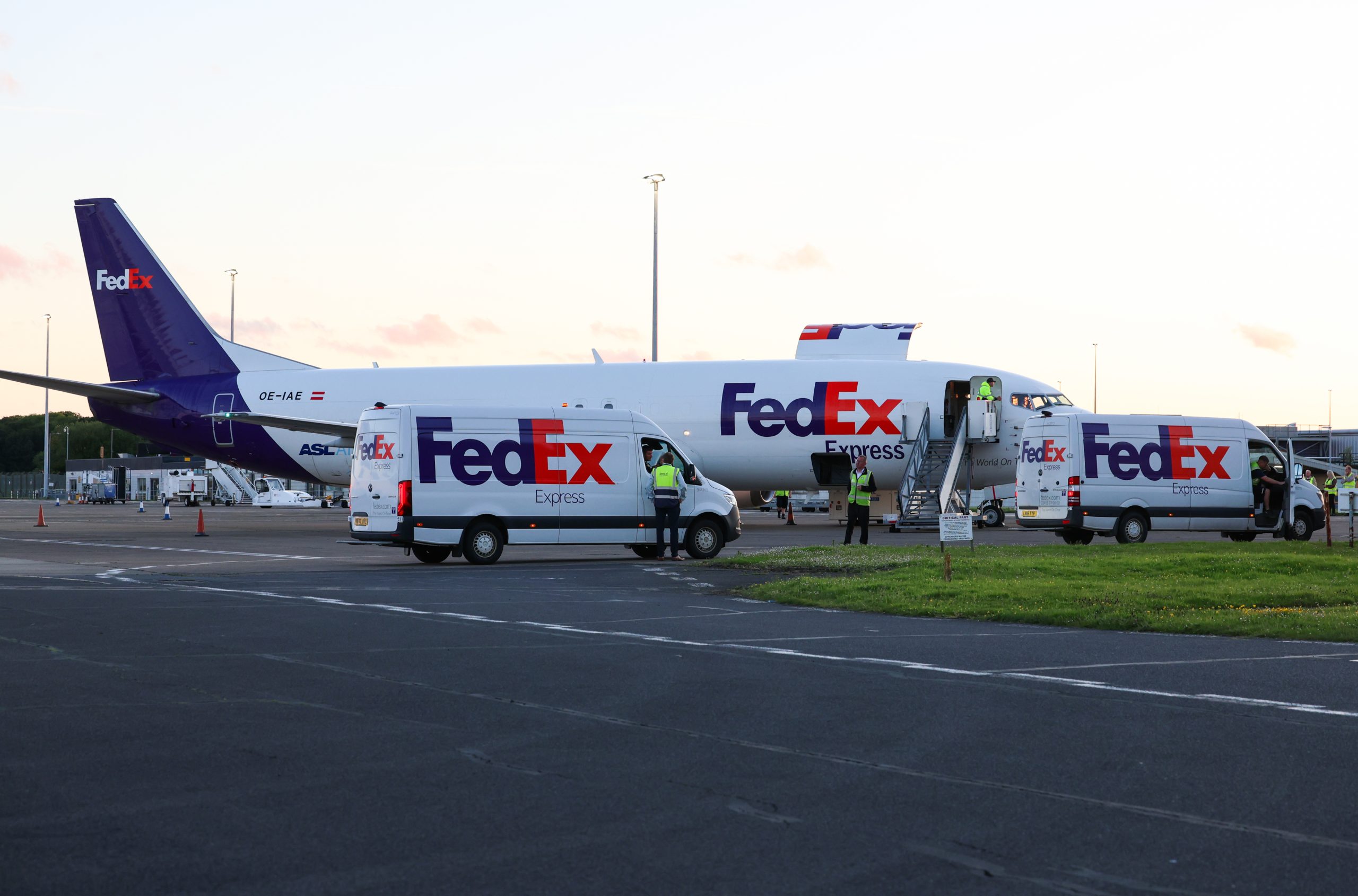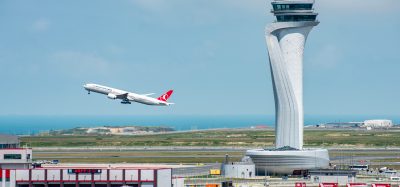Talking freight, real estate and sustainability with Phil Forster
- Like
- Digg
- Del
- Tumblr
- VKontakte
- Buffer
- Love This
- Odnoklassniki
- Meneame
- Blogger
- Amazon
- Yahoo Mail
- Gmail
- AOL
- Newsvine
- HackerNews
- Evernote
- MySpace
- Mail.ru
- Viadeo
- Line
- Comments
- Yummly
- SMS
- Viber
- Telegram
- Subscribe
- Skype
- Facebook Messenger
- Kakao
- LiveJournal
- Yammer
- Edgar
- Fintel
- Mix
- Instapaper
- Copy Link
Posted: 22 July 2024 | Phil Forster | No comments yet
Phil Forster, the Managing Director for Teesside International Airport spoke with International Airport Review’s Editorial Assistant, Chunekshi Wimalasuriya, about the development of new revenue opportunities for the airport.


Caption: Unit D, the first completed facility of the airport’s Business Park South. Credit: Teesside Airport.
How is your airport progressing? Are there any new developments that you could tell us about?
We’ve got a lot of things going on. One of the key things for our airport is that we don’t just look at the passenger side of things, albeit that is clearly very important as well. But we also have three key elements that we look to, to grow our airport. Those three things are freight, real estate and sustainability. We are in the process of building a new road which will unlock what’s known as Business Park South. That’s over 270 acres of land to develop. The entire airport site is over 800 acres of land – this comes back to another big revenue opportunity for the airport.
That site is the UK’s largest and first operational freeport. We’re just starting to speak to a number of different tenants. The first unit is up, and we hope to announce who that tenant will be in the very near future. We’ve just announced that FedEx will start flying into the airport as well, with eight flights a week to Charles de Gaulle. We’re also speaking to more cargo carriers, so things are starting to come together on the freight side.
On the real estate side, we’ve already, on the north side, announced Airborne Colours are coming in. We’ve got a hangar that will be built for them in September 2024 and they have a second hangar on the way as well.
On the freight side, things are going very well. Looking to sustainability, we’ve got a joint venture with SSE Energy Solutions that we’re currently exploring, looking at a new solar array which could eventually deliver enough green electricity to power the equivalent of more than 17,000 homes. We can eventually put up a 50 megawatt solar plant across the site, to create green electricity that we can generate for ourselves. We want Teesside Airport to be the first to be completely off the electricity grid. We’re looking at battery storage options as well, so there’s lots of things going on in these three key areas.
On the passenger side, our routes are going very well – load factors, yields etc. which is what the airlines want to see. Clearly, we want to get more. In fact, we’re being inundated from the passengers that we serve to bring more routes to Teesside Airport, hence why we’re here at Routes Europe to try to bring some of those airlines in.
What was the motivation and inspiration behind developing the Business Park South?
I think the big thing with any airport, especially a regional airport, is that you can’t just rely on passengers. Airports must diversify their revenue streams, look at different ways that they can bring business in, because it is a very difficult market. When I look at Teesside International for instance, the airport hasn’t had a lot of investment. Clearly, it has been left for a number of years for different reasons. This means that there is a huge opportunity to unlock revenue.
The economic regeneration of the airport and the region will come through things such as the business park, because it’s also going to bring jobs, investment, inbound tourism, the Gross Value Added (GVA) – all these things that come with a successful airport.
The south side development is a huge opportunity for us, and I’m delighted to say because it’s in the Freeport, it’s on a runway. There’s a lot of great opportunities and we are in the final throes of having a number of exciting discussions with a number of future tenants.
How were you able to secure that partnership with FedEx, and how does it position the airport more broadly?
FedEx are the world’s largest cargo carrier and freight operator, so it’s fantastic for us. We’ve built a very good relationship with them. And I think the reason we managed to entice them to come in to serve Teesside is because of our surface access, where the airport’s located. With two main air roads either side of us, that they can get to, Teesside has a lot more locations, when coming into Teesside, because of the fantastic surface access.
Tell us more about the SSE Energy Solutions development and why you thought it was important to establish it?
I’ll not hide from the fact that it has the potential to be a very good revenue generator for the airport. We’ve got our own private wire network, which allows us to have green electricity on the site. As I say, we want the airport to be the first airport to be off the grid as well, so we are looking at the battery storage options. In terms of sustainable development, this will really future-proof the airport from a revenue perspective, but equally we’re doing our bit for the environment and giving all our tenants access to green electricity, which clearly is a huge thing and something we want to be able to offer.
The airport will also be home to a permanent hydrogen refuelling station. Tell us about your hydrogen ambitions and what will it mean for the future of the airport.
We were already the first UK site to be trialling this for the government, and now we’re getting a permanent hydrogen refuelling station.
We do a lot of stuff with hydrogen in terms of our ground power operations for our handling. We have the likes of electric GPUs, solar-powered steps, hydrogen-powered tugs, but we also look at what else it can lead to. We have FedEx on site here now. Could we have discussions with FedEx, for instance, to look at their last mile journey to see if they can deliver their final goods on hydrogen vehicles.
There’s a number of different opportunities, but because it will also be a public venue, obviously a public set-up, it would be great to see other HGV vehicles being able to come in and use the station. And again, from a revenue point, it’s very lucrative for the airport.
What is your business outlook for the future?
The outlook for the business is very optimistic. This airport hasn’t just had to deal with COVID like every other airport has, we’ve had to deal with what’s going on in terms of the Russia-Ukraine conflict and the cost-of-living crisis. Teesside Airport itself hadn’t really been trying to grow for a number of years. It had been, I would say, just treading water, and, if anything, was probably in the midst of possible closure. So, we’ve had to completely revolutionise and bring back a new airport while not forgetting what a difficult period it’s been for the industry. However, we have got some successful airports either side of us with whom we’re now trying to compete, that we want to be part of – the outlook is brilliant!
I think we really have formed a niche for ourselves. We were the first UK airport to bring in the C3 X-ray machines. This year we got the TTG (Travel Trade Gazette) Best UK Airport Award. We’ve got the British Travel Award, and the best UK airport for leisure travel. So, we’re really starting to get the airport back on the map. The airlines are now seeing the ones that we’ve managed to bring in. We’ve got a good route mix and clearly, we want to bring more in. But we’re getting excellent load factors, good yields. Now, the airport is actually starting to move forward, and it really is great to see. And it’s all testament, I guess, really to our shareholders, but ultimately to the staff at the airport as well, who do a tremendous job.


c: Teesside Valley Combined Authority
Phil Forster began his career in television where he spent five years as a reporter with Sky, based across the North of England and Scotland before moving into the world of aviation to take on the role of Media & Public Affairs Manager at Newcastle Airport. After spending three years at the north-east airport, Phil then moved to Leeds Bradford Airport firstly in the role of Aviation Development & Corporate Affairs Manager, before progressing to become the airport’s Head of External Affairs.
Phil led the airport’s public affairs strategy, including lobbying on aviation strategy and capacity and was heavily involved in the airport’s aeronautical and commercial operation which aimed to put customer experience at the heart of the business strategy while boosting the airport’s international connectivity.
He joined Teesside International Airport as Commercial Director in 2019 before taking on the role of Managing Director in 2020. He is responsible for overseeing Teesside International and its current transformation to ensure the airport is ready for the increase in passenger numbers resulting from securing new domestic and holiday services. He is also driving forward the redevelopment of the airport masterplan utilising its land and assets, including its new cargo handling facility, the creation of a £200 million business park and plans for the airport to be net zero by 2035.
Related topics
Airport development, Cargo, Green energy, Non-aeronautical revenue, Route development, Sustainability, Sustainable development



















